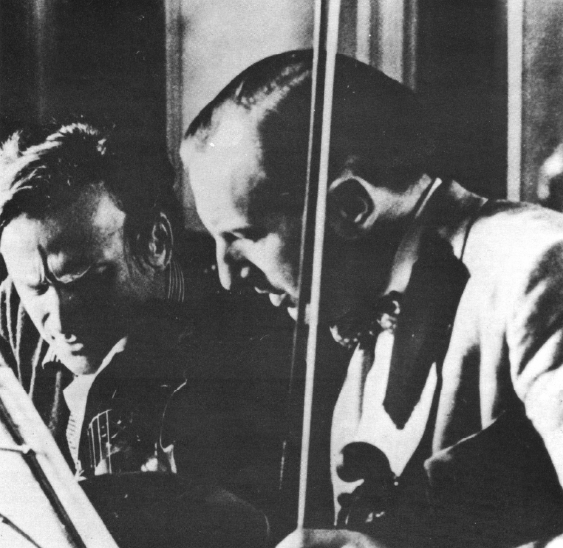Foreword by Robert Masters
Born in 1917 Robert Masters began his studies at the British Royal Academy of Music in 1933. He was later appointed Professor, a post he held at the Academy from 1947 until 1963. During the 1950s his Piano Quartet toured extensively in Europe, the Middle East, Asia, Australasia, and the USA. Robert also served for many years as leader of the London Mozart Players. Forming the orchestra that became known successively as the Bath Festival Orchestra and the Menuhin Festival Orchestra, Robert was leader and co-soloist with Yehudi in concerts throughout the world. The Orchestra's legacy is an impressive catalogue of recordings. After retirement from the Menuhin School, Robert established the Menuhin International Violin Competition in Folkestone, England, and was its Artistic Director from 1983 to 1995.
Robert and Noel lived in Australia until 2014 when Robert died, aged 97. Noel has since returned to the UK to live near her daughter.

Robert Masters and Yehudi compare notes at
rehersal during a 1960s Bath Festival. (Photo: David Farrell/EMI)
Robert writes of Yehudi:
|
I had been having violin lessons for two years when soon after my twelfth birthday my father took me to the Royal Albert Hall in London to hear the thirteen-year-old Yehudi Menuhin play three violin concertos with orchestra. Taking our seats in the highest balcony, we gazed down at the excited throng spread below us. When the music began, we were so far from the stage that the sound reached our ears noticeably after we saw the musicians' movements. How could I have possibly known then that I would be spending 40 years of my life in close association with this boy?
My first meeting with Yehudi took place in 1954 just prior to a charity recital of Bach Solo Sonatas he was to give in St. Paul's Cathedral before the Queen Mother. My concert agent had phoned asking me to go to the Cathedral with my violin to meet Yehudi and help him to decide the best position from which to perform in this very resonant building. He played from different positions while I listened, then I played and he listened. A daunting situation, I assure you. Finally, we both agreed that the only place from which the player had any sense of what was happening to the sound was to perform from the pulpit with the vast stone pillar immediately at the player's back acting as an acoustic baffle. To my complete astonishment, Canon Collins, Dean of the Cathedral, refused to allow Yehudi to perform from this lofty position. Instead, the lectern was removed and a platform built close to a matching pillar on the other side of the nave. Later, these improvisations enabled Yehudi to overcome the confusion of sound we produced during rehearsal and to provide the audience with a memorable evening. In 1958 when Yehudi was taking his first steps as a conductor I formed an ensemble with the specific intention of providing him with an orchestra for tours, for Festival seasons, and for recordings. Noel, my Australian-born wife, managed the orchestra. Thus began a close professional association and valued friendship with the Menuhins. In 1963, I was a member of the inaugural staff of violin teachers at the Menuhin School in Surrey and later became its Director of Music. I was therefore positioned to observe Yehudi as a performer, as an educator, and as a man of ideas. After reading this volume I came to the conclusion that there were aspects of Yehudi's pre-1958 life that had hitherto escaped my notice; they had either been shielded from view or overlooked by previous biographers.
Sydney, May 2008
|
